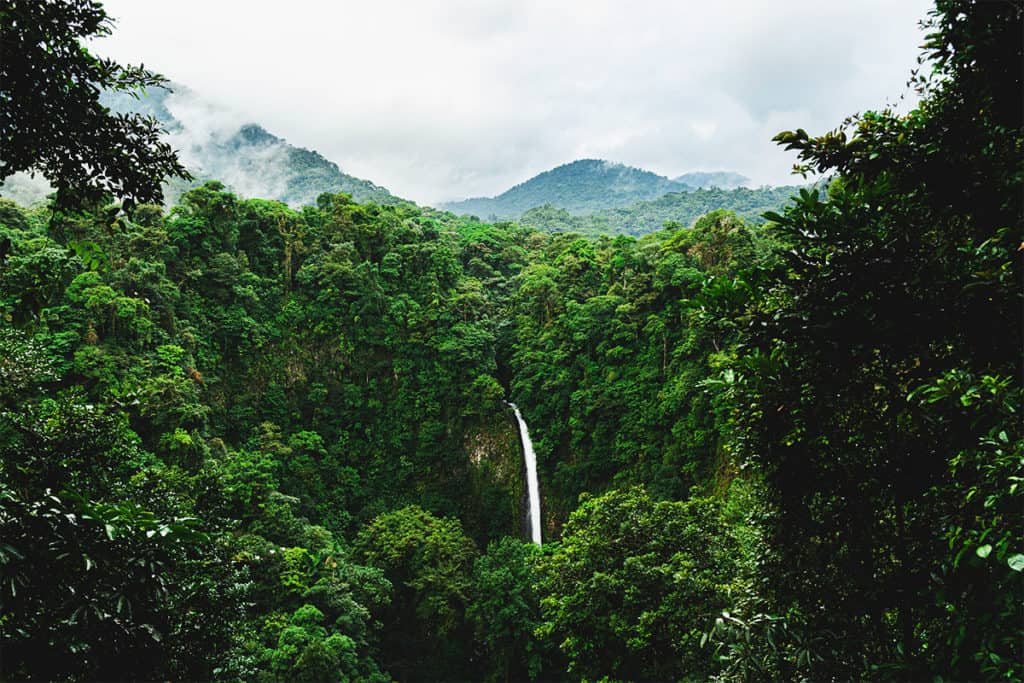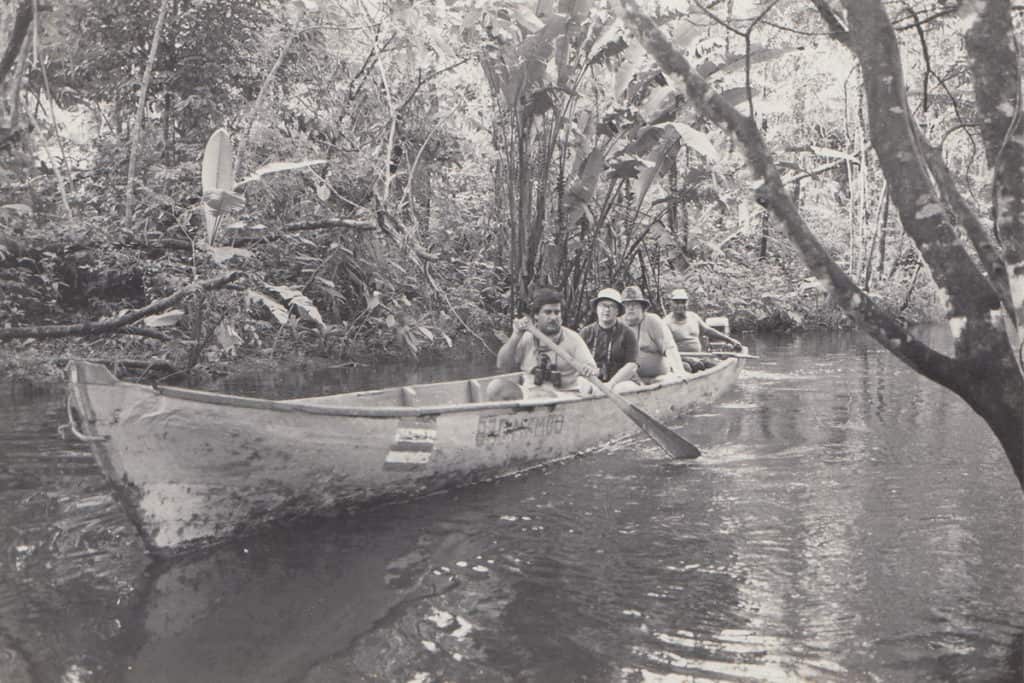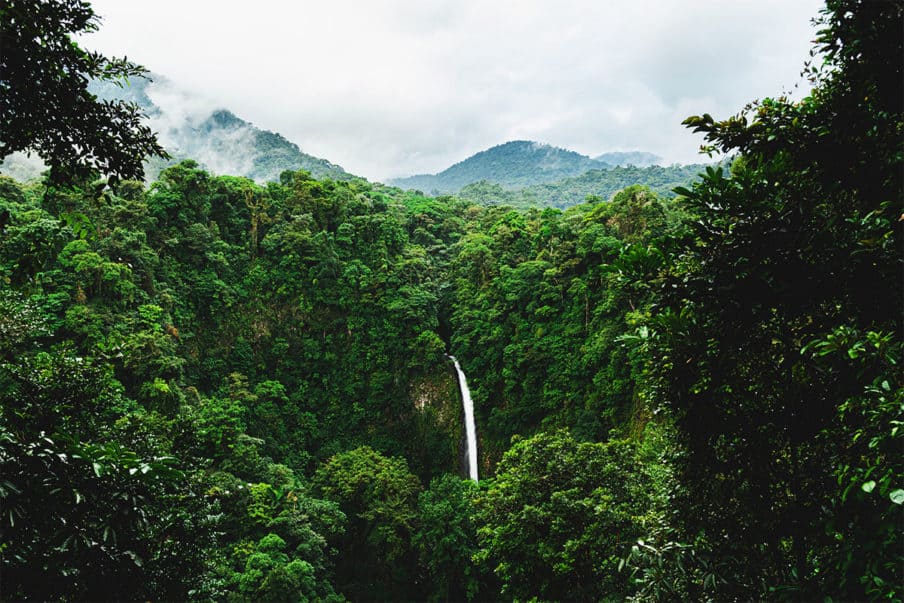
Costa Rica has designated almost 28% of its entire land area as protected land, almost half of which is organized into various national parks. Costa Rica is a land rich in animal and plant life, with an estimated 5% of the world’s biodiversity found within its borders.
In fact, with more than 600 wildlife species every 10,000 square kilometers, Costa Rica is considered to be the 4th most biodiverse country in the world per square kilometer, surpassed only by Brunei, Belize and El Salvador.
With such a rich ecosystem, it’s no wonder that the government of Costa Rica has made efforts to protect its natural treasures, and they have done so by designating certain areas within its borders as protected lands.
But what are protected lands? How do they work in Costa Rica and how much of Costa Rica’s lands are designated as such?
What are Protected Lands in Costa Rica?
As the name would suggest, protected lands, otherwise known as conservation areas, are various locations within a country, in this case Costa Rica, that are protected by law for conservation purposes.
These areas are usually recognized for their inherent cultural value, natural value, or ecological value, as is the case with Costa Rica’s diverse wildlife. Depending on the laws that govern these protected areas, the amount of human presence or the exploitation of the resources in these areas are limited, if it even exists.
In Costa Rica, protected lands take the form of national parks, nature refuges and reserves for indigenous people. Some of the protected land act as “corridors” between pockets of forests that will allow wildlife and plants to migrate between these areas without being harassed by people.
There are also areas that include portions of coastline and marine areas, including huge portions of the ocean.
Costa Rica’s Protected Lands
Depending on their protection status, these national parks are generally open to the public and are used as tools for educating people on Costa Rica’s conservation efforts. There are 28 national parks in Costa Rica, many of which can be visited on your own or as part of a tour.
The largest of these national parks is La Amistad International Park, or Parque Internacional La Amistad, which covers more than 400,000 hectares of tropical forests found in and around the Talamanca Mountain Range.
The rest of Costa Rica’s protected lands are a combination of indigenous native reserves, wildlife refuges and the previously mentioned wildlife corridors. These areas are usually closed to the public and can only be accessed by naturalists and biologists that study the local ecosystem.
Indigenous reserves are pieces of land where Costa Rica’s indigenous people can live out their lives without being bothered by the outside world. Some of these areas can be open to the public, depending on the preferences of the people living there, but unless otherwise mentioned, non-natives aren’t allowed into these areas without a guide.
Some of the tribes living in these areas receive a small stipend from the government in return for helping keep the surrounding forests as pristine as possible.
The rest of Costa Rica’s protected lands that are not national parks or reserves are designated as nature refuges. Much like the national parks, the main purpose of these areas is for conservation, but unlike national parks, they are generally not open to the public.
There are exceptions, however, which allow naturalists, biologists and some students to enter the area. In Costa Rica, there are 60 wildlife refuges, 30 protected zones, 11 forest reserves, 8 biological reserves and at least 15 protected wetland or mangrove areas.
The Story of Protected Lands in Costa Rica

At the turn of the 20th century, Costa Rica faced a serious problem with deforestation, which caused the loss of many animal species, including ones that have not been catalogued or discovered yet.
This wholesale destruction of Costa Rica’s forests was due to the high demand for land, particularly for building plantations and cattle ranching. This form of land use was ultimately deemed unsustainable, and in the 1960’s, research has found that the continuing loss of forest will eventually lead to an ecological collapse. This collapse will in turn lead to the loss of natural resources that many Costa Ricans rely on.
By the 1980’s, a cabinet position within the Costa Rican government was created, tasked with protecting and preserving the country’s natural resources.
Later in the decade, the Costa Rican National Conservation Strategy for Sustainable Development was created, which eventually led to the creation of major policies and actions within Costa Rica to help preserve its environment.
The strategy itself was responsible for the creation of Costa Rica’s national parks system, including several other policies that would help encourage sustainable growth within its economy.
These policies also helped create improved forestry, ecotourism, debt reduction through conservation and collaborative works between the government and various private industries. This program made it possible for Costa Ricans to conserve their natural resources without sacrificing economic prosperity.
Costa Rica Debt for Nature Program
One of the most successful programs employed by the Costa Rican government to help maintain its conservation efforts is the Debt for Nature Program. This program involves a lot of help from organizations outside of Costa Rica.
This program involves Costa Rican government agreeing not to harvest the natural resources within specific regions. In exchange, certain conservation groups will buy off part of Costa Rica’s national debt, effectively leveraging Costa Rica’s rich biodiversity.
The money made from such agreements can also be used by the government to help pay off the citizens that ultimately rely on these protected regions.
One of the biggest problems concerning Costa Rica’s wildlife is poaching, usually by impoverished people living around the protected areas. Costa Rica pays these people a monthly stipend, and in turn, not only will this prevent them from poaching endangered animals, they will also help protect the region from poachers.
One of the more successful Debt for Nature Program exchanges involved the Nature Conservancy. The Nature Conservancy has helped pay off $80 million of Costa Rica’s national debt but has only cost them about $13 million to pay. As part of the agreement, Costa Rica has committed at least $40 million towards its other conservation projects thanks to the money they have saved.

